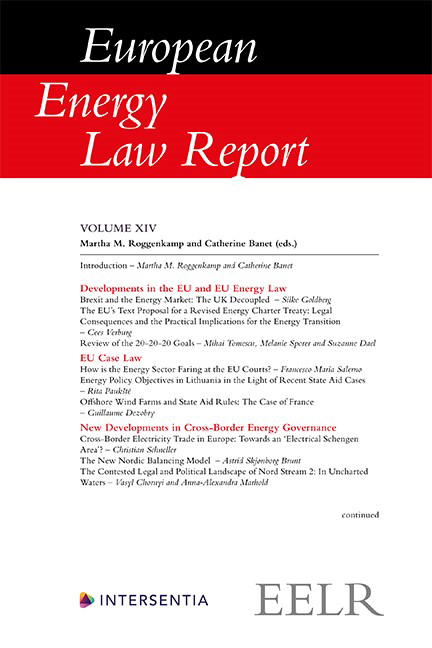Chapter VII - Cross-Border Electricity Trade in Europe: Towards an ‘Electrical Schengen Area’?
Published online by Cambridge University Press: 26 May 2022
Summary
INTRODUCTION
The signing of the first Schengen Treaty on 14 June 1985 marked the beginning of a stepwise process towards the abolition of border controls in Europe. Over 35 years later, after Europe`s refugee crisis and amidst the COVID-19 pandemic, unhindered travelling in Europe obviously can no longer be taken for granted. Just like passenger traffic, European trade in electricity is confronted with borders, both physically and legally. But, just like the promise of the Schengen acquis, unhindered trade (not only) in electricity remains a European ideal worth striving for.
This chapter deals with past and future developments of the European cross-border trade in electricity. It looks at the new sector rules of Regulation (EU) 2019/943 and the role of European competition law. The outlook raises the question of whether the internal electricity market is moving towards an ‘electrical Schengen area’ without borders or is instead based on nodal congestion management.
The chapter starts by describing the causes for growing congestions in the European transmission system for electricity and how methods for congestion management have improved over the years and have allowed for more efficient use of the physical infrastructure (section 2). The new rules for capacity allocation of Regulation (EU) 2019/943 are then explained with a focus on the requirements for bidding zone (re)configuration and the obligation to provide a minimum cross-border trading capacity (section 3). Section 3 also considers the potential impact of the new regulatory frame which might lead to a trend towards forming smaller bidding zones in the future. Section 4 looks at congestion issues from the perspective of European competition law. It addresses the Swedish Interconnector case and the DE/DK Interconnector case as well as the relationship between competition law and sector regulation. The concluding section 5 raises the question whether the EU might be heading for an ‘electrical Schengen area’ and stresses the need for better-defined roles of competition law and sector regulation.
- Type
- Chapter
- Information
- European Energy Law Report , pp. 131 - 148Publisher: IntersentiaPrint publication year: 2021



